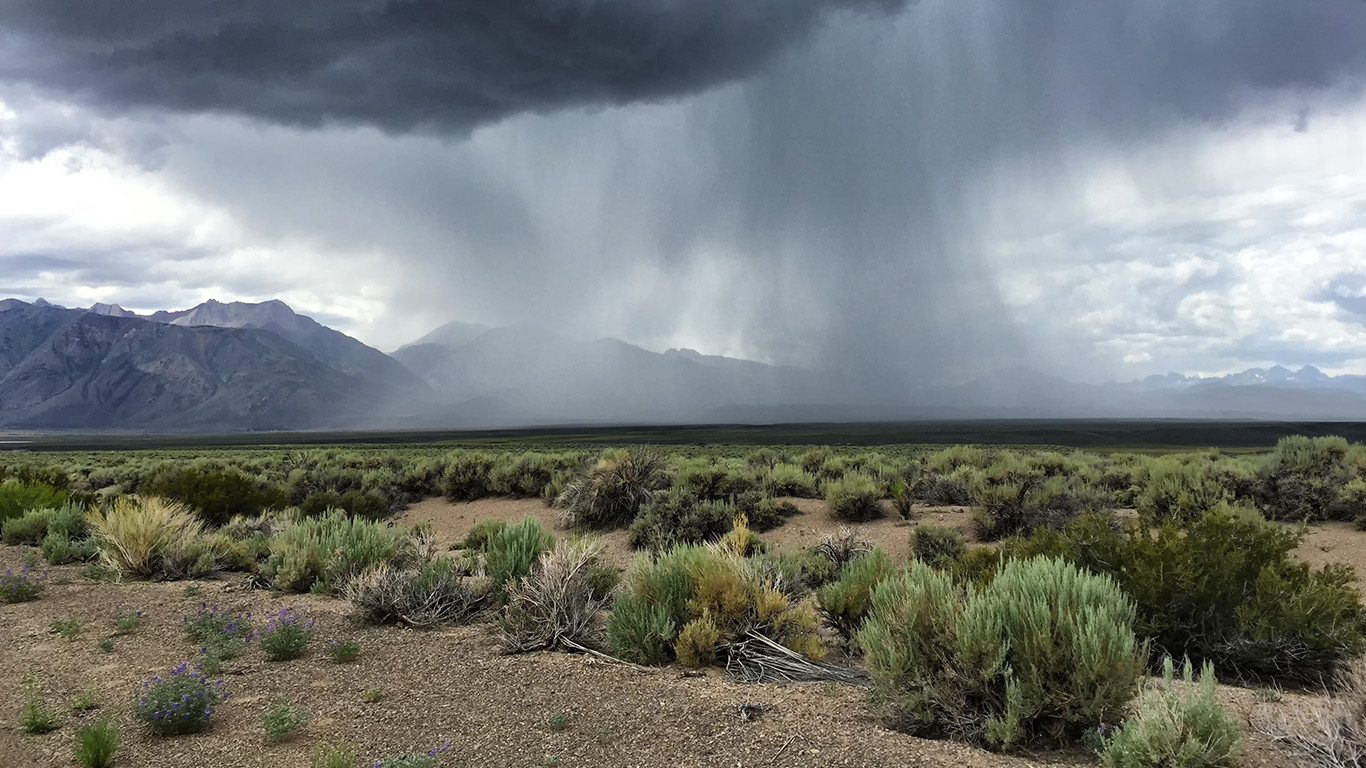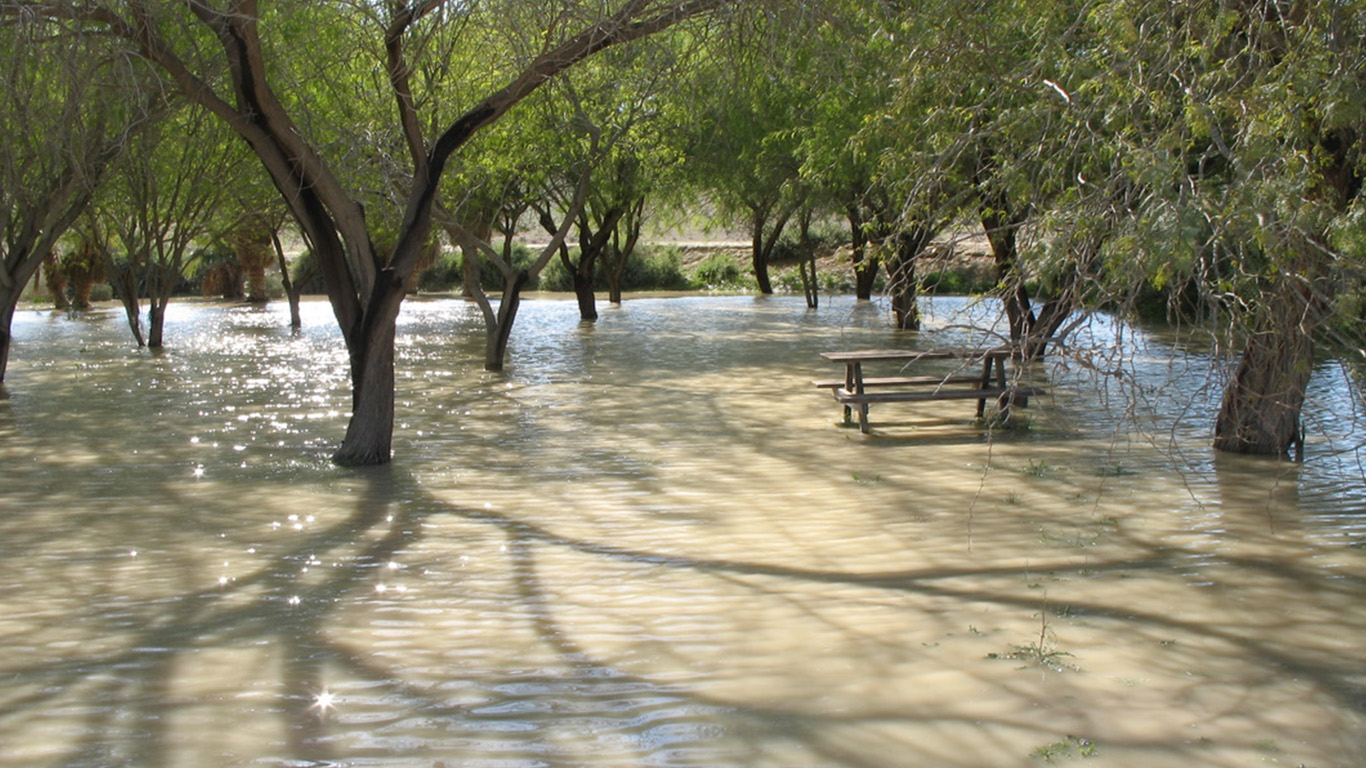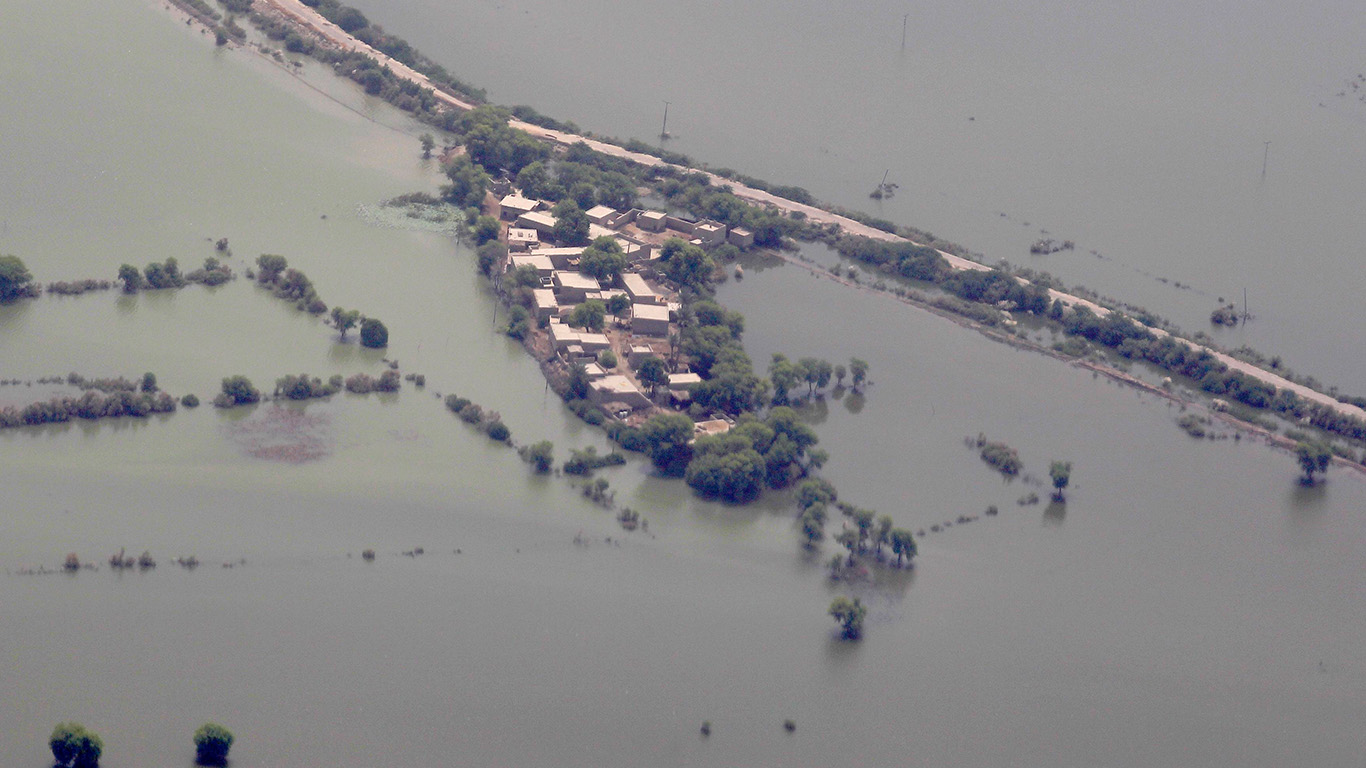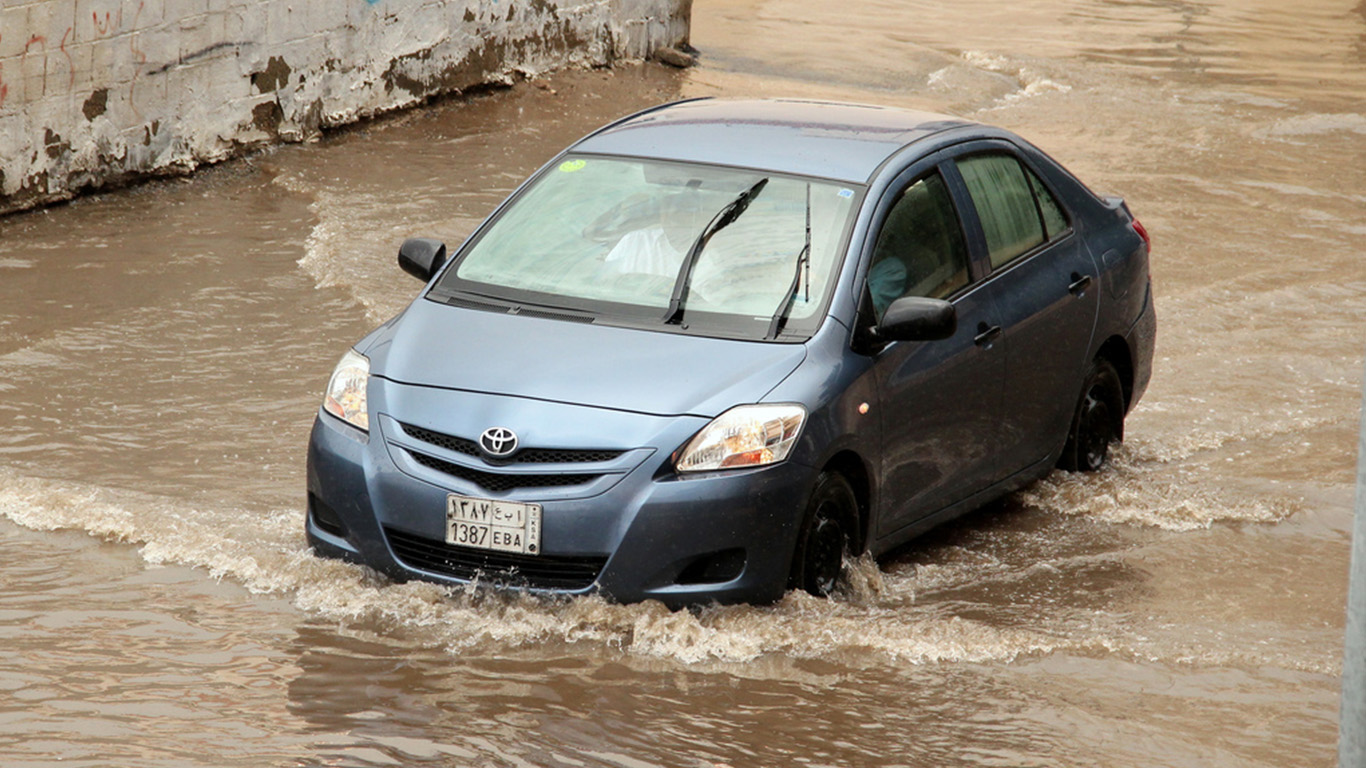Special Report
6 Extreme Desert Floods Around the World

Published:
Last Updated:

Early this year, Chile’s Atacama desert — the driest desert in the world — experienced an extremely rare rainfall, which resulted in flooding that left six people dead. Defined by their aridity, rainfalls are rare in deserts. Sometimes, however, uncommon meteorological circumstances line up perfectly, causing extreme flooding.
Flooding is the most deadly weather threat to humans, and it only takes a small amount of water to trigger one in a dry area. Desert sand does not easily absorb water, and many areas may only see a couple of inches of rainfall over multiple years. Therefore, heavy rains and irregular storms can trigger flash floods, which often follow the paths of dry stream channels. According to the U.S. Geological Survey, more people drown in deserts than die of thirst.
As flash floods often occur within two hours after the start of high intensity rainfall, there is often little time to prepare. Canyons and stream beds are especially dangerous, and rain running down steep terrain can result in mud slides. Those living in highly populated, high desert climate areas are also at elevated risk of flooding as buildings and roads further limit the amount of rain the ground can absorb.
Desert flooding may have other interesting results besides destruction. After a storm brought less than 1 inch of rain water on Southern California’s Death Valley National Park earlier this year, visitors were shocked to find a 10-mile-long shallow lake in the park. The rain water accounted for about one-third of the total annual precipitation for the area, which is the hottest and driest spot in North America. While this rainfall arrived too late in the season, similar events have triggered exceptionally large yields of desert flowers.
Click here to see 6 extreme desert floods around the world.
In addition to other sources, 24/7 Wall St. used data from the Dartmouth Flood Observatory to determine the beginning and end dates of the floods in question.

Arizona, United States
> Began: Aug. 10, 2014
> Ended: Aug. 19, 2014
The 2014 monsoon season in Arizona was more severe than usual as flash flooding inundated Saguaro National Park’s Tucson Mountain (West) District. Dirt roads were wiped out, and many paved roads were inaccessible. Arizona natives also had to deal with flooding in the Phoenix area. Helicopters were brought in to rescue people from fast-moving water in areas 30 miles north of Phoenix. Trailer parks were evacuated, schools flooded, and first responders rescued motorists from vehicles awash in flood water.
[in-text-ad]

California, United States
> Began: Feb. 25, 2019
> Ended: March 4, 2019
Death Valley National Park, one of the hottest and driest locations in North America, experienced a once-in-a-lifetime event earlier this year, when an intense storm created a temporary, 10-mile long lake in the park. The new body of water was located in the park’s Salt Creek area and came about because a storm dumped 0.87 inches of water in the area in early March. Because the parched landscape could not absorb the water so quickly, a new lake was formed, giving a shutterbugs a rare opportunity to photograph the Panamint Mountains against a lake-produced reflection.

Northern Chile and southern Peru
> Began: March 25, 2015
> Ended: April 8, 2015
Torrential rain poured down on the Atacama Desert in northern Chile and southern Peru four years ago, with accumulations of 1 to 2 inches in 24 hours — the first rainfall in many centuries. The Atacama Desert is the driest area in the world because of its latitude (Many deserts are found in bands along 30 degrees latitude south, near where Atacama is located.), high elevation, proximity to the Andes Mountains, and the Humboldt Ocean Current, which combine to keep the land parched. Four years ago, a high pressure system that usually keeps storms from moving northward weakened and shifted to the east. This caused a chain of atmospheric events that eventually produced intense rainfall over the desert that caused flooding. The flood resulted in several fatalities, destroyed 100 homes, and caused $1.5 billion in damage.

Various locations, Israel
> Began: April 24, 2018
> Ended: April 27, 2018
Monsoonal rain turned deadly in Israel in April last year, when 10 young people died while they were on an organized hike in the Tzafit Valley near the Dead Sea. Two other young people perished in the Negev desert and the southern West Bank due to flooding from heavy rainfall. Severe storms in Israel in April are not rare, but they are surprising for that time of year. The tempests last year caused traffic accidents and the closing of roads as many submerged. People in villages east of Bethlehem had to be rescued, according to authorities.
[in-text-ad-2]

Northern Pakistan
> Began: July 27, 2010
> Ended: Nov. 15, 2010
Rainfall in Pakistan is usually not intense and is more sporadic, and it occurs in the northeastern part of the country. That did not happen in 2010. The 2010 floods in Pakistan were caused by very high rainfall in the Indus River watershed over July and August. A high pressure system north of the Black Sea confined hot air over Russia and caused intense rainfall over Pakistan. Decades of forest reduction also exacerbated the flooding since vegetation soaks up precipitation. Pakistani meteorological officials said rainfall totals were 70% above normal in July and 102% over normal in August. In Peshawar, 10.8 inches of rain fell in one 24-hour period.
The floods were one of the worst in the nation’s history, causing almost 2,000 deaths, and affected 18 million people.

Jeddah, Saudi Arabia
> Began: Jan. 26, 2011
> Ended: Jan. 31, 2011
Jeddah, Saudi Arabia, is classified as having a tropical and subtropical desert climate. The area has experienced numerous bouts of heavy rain over the past decade, including one instance in January, 2011, when 11 cm (4.3 in.) of rain fell in 3 hours, resulting in rampaging flood waters and at least 10 fatalities. Last year, floods killed 30 people across the country.
The thought of burdening your family with a financial disaster is most Americans’ nightmare. However, recent studies show that over 100 million Americans still don’t have proper life insurance in the event they pass away.
Life insurance can bring peace of mind – ensuring your loved ones are safeguarded against unforeseen expenses and debts. With premiums often lower than expected and a variety of plans tailored to different life stages and health conditions, securing a policy is more accessible than ever.
A quick, no-obligation quote can provide valuable insight into what’s available and what might best suit your family’s needs. Life insurance is a simple step you can take today to help secure peace of mind for your loved ones tomorrow.
Click here to learn how to get a quote in just a few minutes.
Thank you for reading! Have some feedback for us?
Contact the 24/7 Wall St. editorial team.